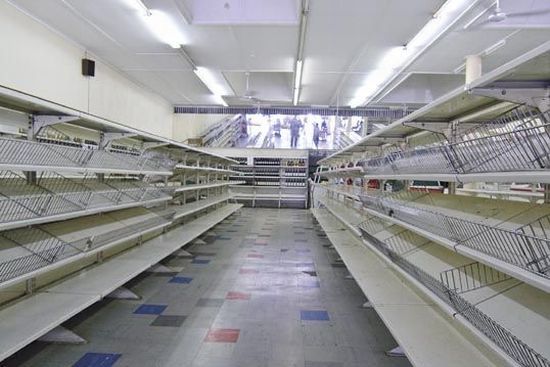Supermarket chain in China is going to open augmented reality stores

What you see in the announcement photo is not just empty shelves. And this is not a shop plundered by the hungry Chinese. No, there are goods in this store, but they are simply not visible to the naked eye. The management of the Chinese Yihaodian trademark (supermarket chain) plans to open as many as 1,000 stores with “augmented reality” shelves, where there are no real goods, but there are virtual goods.
If you thought that this is a purely virtual store, something like Street View, where you can buy observed objects, you are mistaken. This is a real store, where the viewing of goods and purchases are carried out using mobile devices. As planned, the buyer goes to the store, and guides the cell of the mobile device on the shelves to view the goods offered for sale. When the buyer likes something, he sends the goods to the virtual basket, and the goods are delivered to the customer's home.
')
As you can see, everything is simple and difficult at the same time. One could understand the opening of one or two such stores, as a sample. But a whole thousand ... Yes, and common sense suggests that there are several difficulties. Firstly, you still have to go to the store with your feet, and not through a browser. Secondly, the buyer must have a mobile device with a camera, and it is sufficiently advanced so that an augmented reality application can be installed there. Perhaps, Chinese merchants want, therefore, to attract representatives of more or less affluent segments of the population to the stores (although a good phone is not a guarantee of belonging to such a layer, many take expensive phones for almost 5 years on credit).
And if you go to the store, the real store, you want to see the goods with your own eyes. Of course, a virtual product may look perfect, as if it were the best products in the world. But you never know what will bring you home.
In any case, the idea is interesting, and I would like to see its development in the future.
Via dvice
Source: https://habr.com/ru/post/155081/
All Articles